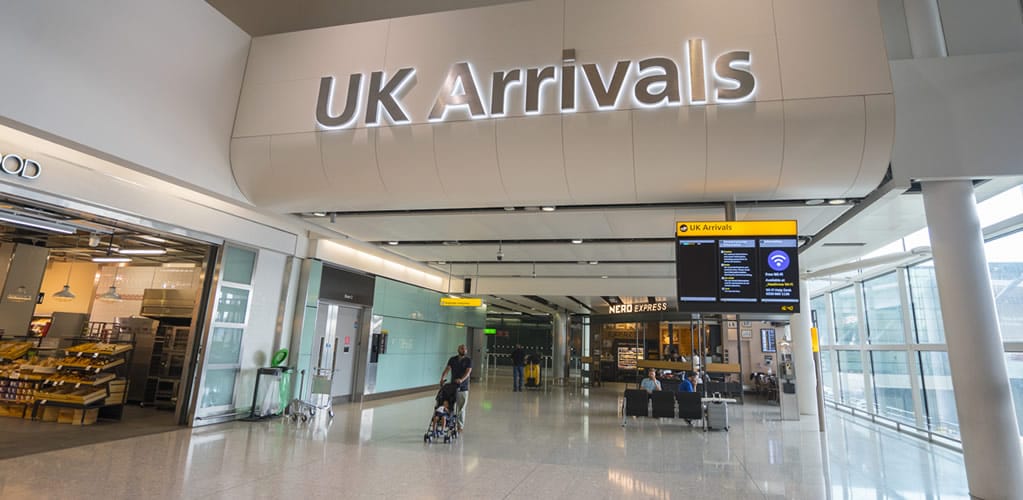New data shows net migration falling − What’s actually behind the numbers
Making election promises about migration numbers is much easier than keeping them.

A s we head into an election where migration is likely to be a key issue, the statistics – which have always been a bit of a headache to untangle – can still feel pretty confusing. New data shows that in the year ending 2023, net migration (the number of people arriving in the UK and expected to stay long term, minus the number of people leaving) stood at 685,000.
This is unusually high by historical standards and is two to three times the pre-Brexit levels. The positive news for the government is that the data appears to show that net migration is falling from the previous year. But this is hard to pin down, as the goalposts keep moving. The data is revised when more complete travel information becomes available, but this can mean substantial changes from the initially reported statistics.
A year ago, when the ONS published estimates for net migration in 2022, the figure was 606,000. This data was later revised up by more than 150,000 to 764,000. From this high level, the 2023 data represents a 10% fall. The figures are still provisional and will be revised later this year – but by how much, and in what direction, we cannot know.
Looking past this quirk of migration data, what do we actually know about what is going on? Numbers have been high for a while: 2023 marks the third year running that overall net migration has significantly exceeded the pre-Brexit, pre-COVID levels of roughly 200,000 to 300,000.
But whoever wins the next election might see lower numbers. A sharp drop in visa grants early this year – notably for care workers – and an increase in student emigration hint at the start of a long-expected fall in numbers.
The head of the government’s migration advisory committee, Professor Brian Bell, has even speculated that there was a “fighting chance” that net migration could decline to as low as 150,000 – considerably under the level in the run-up to Brexit. But it’s not clear how plausible this scenario is.
The UK is also seeing much lower immigration on the humanitarian visa schemes for Ukraine and Hong Kong, which are down 108,000 since 2022. Similarly, numbers of international students from outside the EU have declined. Non-EU student immigration fell 40,000 and emigration rose 42,000, taking 82,000 off the overall net migration figure compared to 2022.
These figures suggest that net migration may be a more problematic issue for the Conservative Party than it has been in previous elections this century. Whether Labour will seek to weaponise it as a key campaigning issue is not yet clear, but if the past decade and a half has shown us anything, it is that making election promises about migration is much easier than keeping them.
Both parties have said that net migration is too high, but have not, so far, set any targets. The Migration Observatory is tracking policy announcements and statements ahead of the election.
Net migration legacy
Immigration data has been a major challenge for Conservative prime ministers (and home secretaries) ever since David Cameron’s ill-fated promise to cut net migration to the “tens of thousands” helped propel him into 10 Downing Street in 2010.
The overall approach to migration has not been consistent over the 14 years the Conservatives have been in power. Under Cameron and then Theresa May, policies initially restricted study, work and family migration. Between 2010 and 2012 these policies appeared to be having their desired effect, with net migration falling.
Things then started to shift. Higher levels of net migration in 2014 and concerns about EU immigration encouraged the Conservative party to promise the Brexit referendum in their 2015 manifesto. After the referendum, it appeared that net migration would fall. EU migration started declining even before free movement ended in 2020. However, non-EU immigration started to rise, largely offsetting this trend.
Boris Johnson presided over the end of free movement for EU citizens. He then made it easier for non-EU workers and students to immigrate, cutting the salary and skills threshold for workers and reintroducing a post-study graduate work route. These policies, combined with humanitarian routes for Ukrainians and Hong Kongers, have contributed to the current high levels of migration.
In the past few months the Conservatives partially reversed some of these liberalisations, taking a more restrictive position by, for example, significantly increasing the minimum income threshold for skilled workers and making it harder for some workers and most students to bring family members with them. The impacts of that are yet to be seen in the data.
Another dimension to this is asylum, which has been a hugely important part of public debate, but contributes a relatively small part to UK net migration (usually about 5 to 10%). Asylum had a low profile at the beginning of the Conservative government. But this changed dramatically from around 2018, when asylum claims started to rise and the government began tracking the number of people crossing the Channel in small boats.
The government responded with policies designed to deter asylum claims by reducing the rights of people who claim. So far, these have not had a large impact on the number of people claiming, although not all have been fully implemented. The Conservative Party’s flagship Rwanda policy has now been kicked into the long grass. Labour has said it will scrap the policy if elected.
The latest numbers show the limits to government policy in influencing migration levels. Despite having more restrictive policies than in 2010, the net numbers remain significantly higher – at least for now. Whoever holds the keys to Number 10 after July 4 might do well to be careful about bold promises on net migration: they can be easy to make, but much harder to keep.

GOING FURTHER
UK election 2024: immigration policy tracker | The Migration Observatory






[Read our Comments Guidelines]